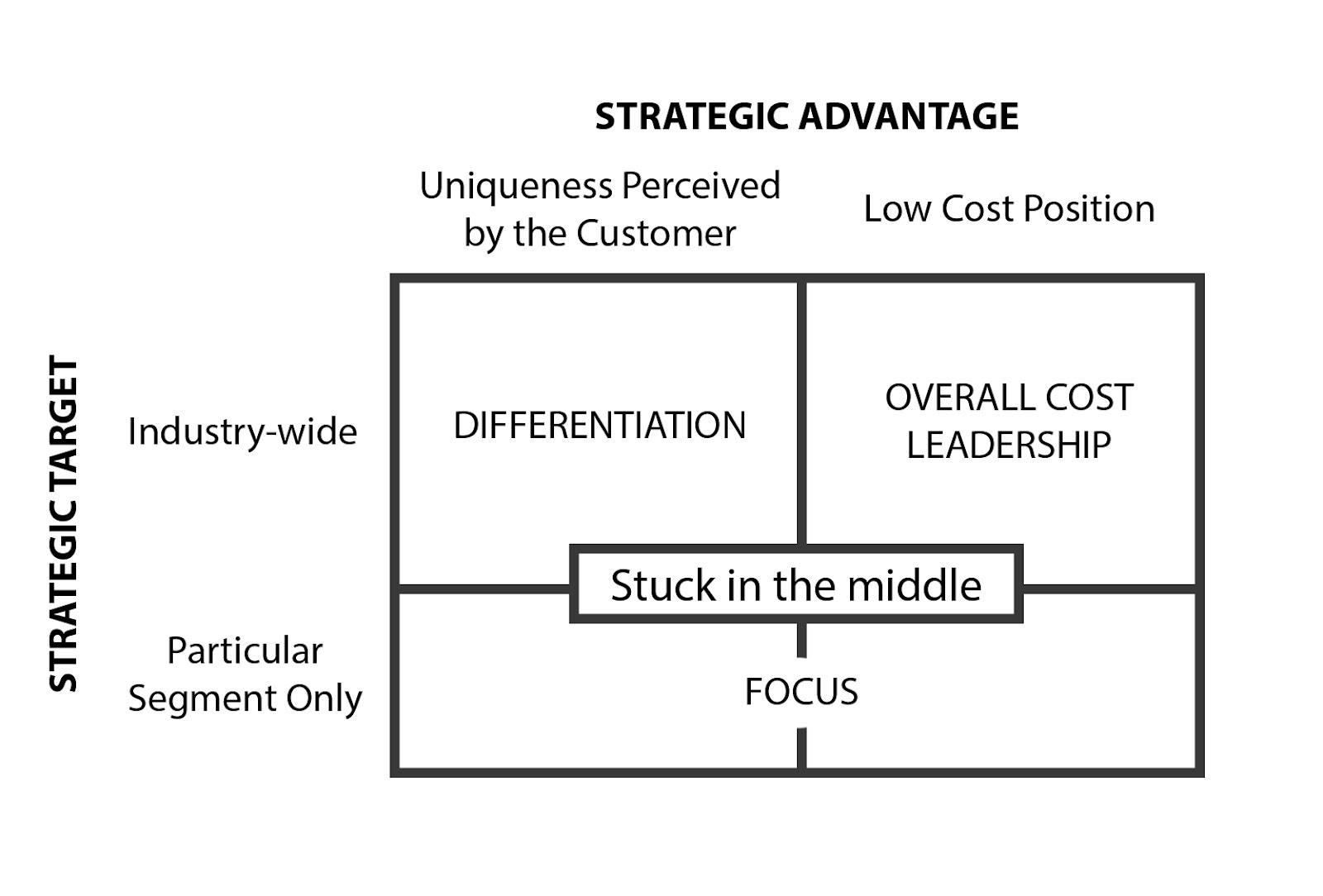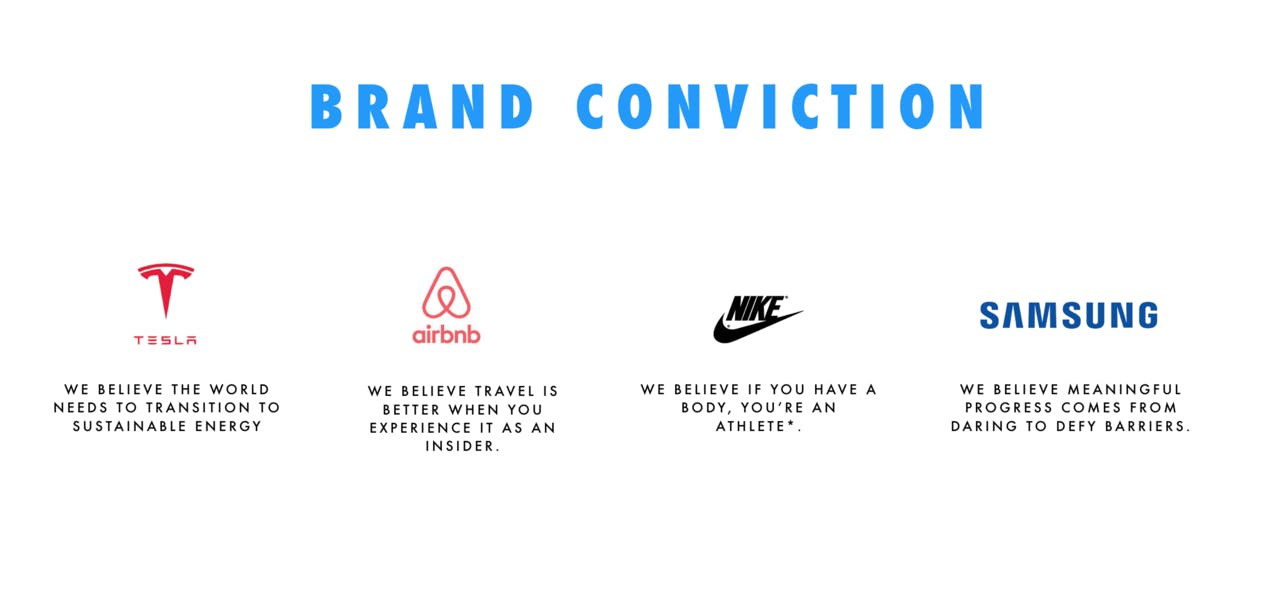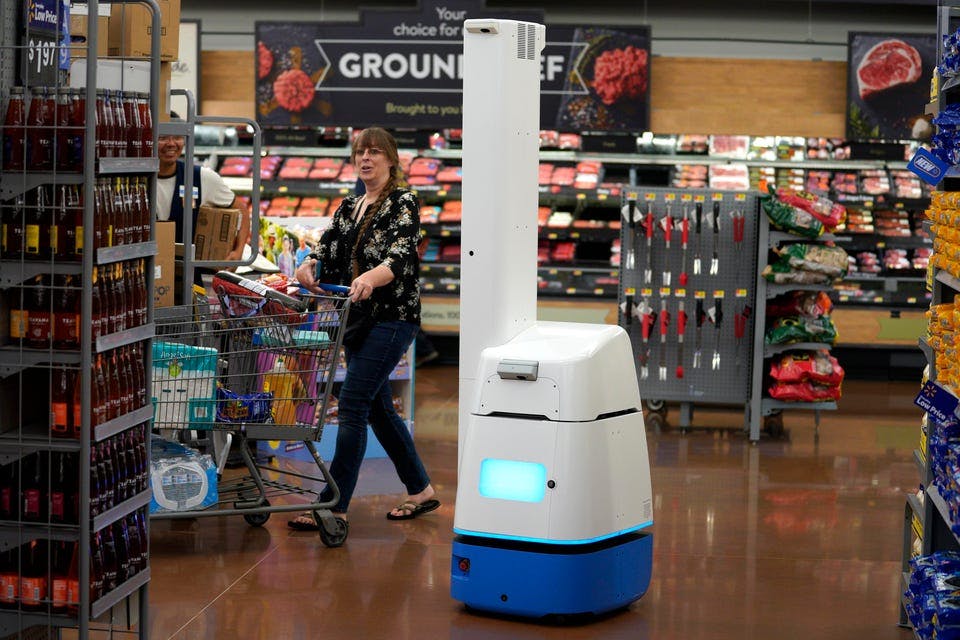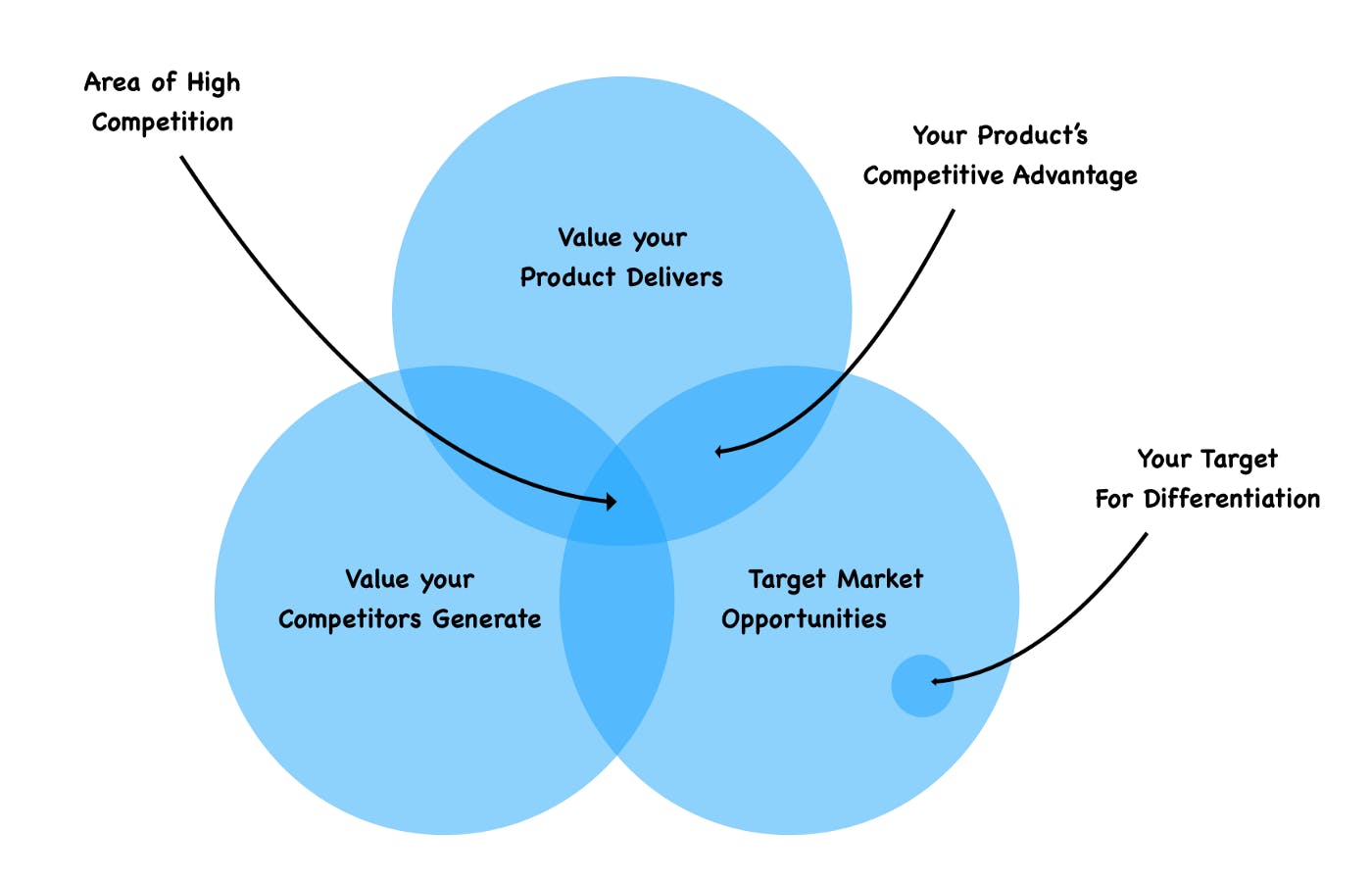What is a competitive advantage with examples
Nov 15th, 2022

Contents
What is a competitive advantage?
Types of competitive advantage
Examples of competitive advantage
How to create a competitive advantage
In markets with fierce rivalry, a competitive advantage that sets you apart from other brands is your key to success. With a properly developed competitive advantage, your company can attract more customers, improve brand loyalty and earn higher revenues resulting in better profit margins and higher return on investment. Therefore, a company's capacity to gain such an advantage is one of its top priorities.
Competitive advantage is not constant. It can change over time for various reasons, resulting from transformations in the business environment. Even if a company enters the market with a unique idea, competitors might copy it in a short time. If a business fails to adapt its competitive strategy to these changes, there is a risk that industry rivals will leave it behind.
In this article, we will describe the concept and types of competitive advantage, consider examples of world-famous brands, and provide tips on creating a competitive advantage for your business.
What is a competitive advantage?
Competitive advantage is a set of factors or characteristics that allow one company to compete more effectively than its rivals in the market. It is an attribute that enables one business to outperform the competitors in terms of sales, profit margins, or customer loyalty. To gain a competitive advantage, a company should offer a substantial benefit to the target customers that is more valuable than competitors’ proposals.
The purpose of creating a competitive advantage is to increase the perceived value of the products and make them more attractive to consumers. A solid competitive advantage should be difficult to copy or recreate within another business. Examples of competitive advantages are unique geographic location, highly skilled workers, recognizable brand image, technological expertise, and excellent customer service.
Types of competitive advantage
Michael Porter, the world-famous competitive authority, identified three generic strategies companies can employ to establish a long-term advantage. Porter’s generic strategies are cost leadership, differentiation, and focus. Companies focusing on cost leadership strategy aim to manufacture and sell products at lower costs than the competitors. Differentiation strategy implies making unique products that stand out from the competition. Businesses that stick to a focus strategy target narrow market segments and provide specialized offers.
We will pay more attention to cost leadership and product differentiation strategies and take a close look at other types of competitive advantage, including strong brand, technological superiority, and access to capital.
Cost leadership
Cost leadership refers to the strategy when a company offers quality products for a significantly lower price than its competitors in the market. Implementing a cost leadership strategy can be challenging as businesses must constantly seek to reduce costs at all levels. To employ a cost leadership strategy, a company should increase operational efficiency by minimizing production costs, hiring fewer qualified employees, or outsourcing to lower-cost locations.
Businesses that stick to a cost leadership approach can rely on economies of scale. Economies of scale are the benefits that emerge when a company increases its production volume. Thus, the expenses of providing products and services are reduced as the company can sell more goods. It is possible because some fixed costs and investments can be distributed across a greater number of goods. In addition, businesses that employ the strategy are often large firms, so they can get discounts on materials from their suppliers.
People often confuse the terms ‘cost leadership’ and ‘price leadership’. Cost leadership aims to reduce the company’s operational costs, while price leadership focuses on charging the lowest price. However, a cost leader can simultaneously be a price leader. Companies that use a price leadership strategy can sell products at incredibly low prices, which reduces profitability and may lead to considerable losses. In contrast, if a business manages to cut operational expenses, it can charge lower prices but earn huge profits simultaneously.

Product differentiation
A differentiation strategy implies a company focusing entirely on the product’s features and advantages to outperform its rivals and make the product uniquely valuable to its clients, unlike any other product on the market. First, marketers convey these distinctive qualities through advertisements and promotional campaigns, and then sales representatives use them to motivate customers to make a purchase. According to this strategy, a company’s competitive advantage can include excellent service, fast delivery, unique packaging, or outstanding quality and reliability.
Product differentiation strategy helps businesses develop recognizable brands and increase customer loyalty. In addition, differentiation creates added value among existing and potential customers as it affects the perception of a product or service. It also allows companies, especially smaller businesses, to avoid competing on price and gain a competitive advantage by focusing on quality, innovation, and design. Moreover, with a focused differentiation strategy, a company can create the impression that there is no better alternative on the market so that consumers will perceive the product as a unique item.
There are three types of product differentiation: vertical differentiation, horizontal differentiation, and mixed differentiation. Vertical differentiation emphasizes a measurable product’s competitive advantage, such as price or quality. Horizontal differentiation takes into account consumer preferences and highlights a specific feature, such as packaging, flavor, or color. Finally, mixed differentiation combines both approaches and focuses on various product characteristics, both objective and subjective.
Strong brand
Building a strong brand is crucial for any company as it allows for increasing advertising effectiveness and developing a deeper emotional connection with consumers. A powerful brand is not just a logo or a name. It is a community built around ideas, values, and beliefs. A strong brand is unique and inspiring. It meets customers’ expectations and immediately comes to mind as the preferred choice for essential requirements. Moreover, a strong brand monitors social transformations and changes in consumer behavior.
When developing a powerful brand, you need to define a purpose. A brand purpose is its reason for existence that is more critical than making a profit. It is a brand’s overarching aim that answers the question: “Why does the business exist?” The following steps include analyzing your competitors’ strengths and weaknesses, determining your target market, and developing a strategy.

Furthermore, creating a compelling brand story is vital to convey your values, vision, and mission. The last step is to build or refresh the brand identity that includes the name, logo, and tone of voice. Finally, you need to maintain brand consistency and ensure that your messaging, storytelling and promotional campaigns resonate with a brand purpose.
Technological superiority
Using new technologies is a great way to revise the business model and improve the efficiency of operations. Technological superiority becomes a competitive advantage when it provides specific benefits, such as the opportunity to automate services or use data insights to accelerate innovations. Moreover, a company can invest in R&D and introduce new products in the market to attract consumers’ attention. Once a firm becomes a digital industry leader, it can differentiate itself from other companies in terms of competitive advantage.
There are many methods to leverage technology and develop a competitive edge. For example, companies can gather information to learn more about customers and employees. Cloud services allow companies to store collected data and use artificial intelligence for in-depth analysis. This contributes to increased efficiency, financial savings, and improved customer experience.
Applications facilitate interactions between a company and its customers across various channels. For instance, cognitive technologies like machine learning and speech recognition are useful for automating processes that formerly required human intervention and decision-making skills. Additionally, one more essential aspect of technology transformation is cybersecurity. It helps companies prepare for cyber risks and prevent customers’ information leakage.
Access to capital
This type of competitive advantage is widely used by large companies in different industries, such as manufacturing, space travel, and medicine. Access to capital is the availability of funds, equipment, and materials required to produce and distribute goods. It can also include access to costs needed for storage, reimbursements for defective products, and the company’s marketing initiatives.
Small businesses often experience difficulties raising capital to bring the products to the market or increase sales in the existing market. At the same time, the availability of significant financial resources for advertising, machinery, R&D, and facilities makes it easier for large businesses to leave competitors behind. Access to capital allows key players in the market to raise funds with less effort and reinvest additional costs to scale production or enter new markets.
Let us proceed to the examples and consider how world-renowned companies have built a solid and sustainable competitive advantage and became industry leaders.
Examples of competitive advantage
Now we will discover the success stories of Amazon, Apple, Walmart, Tesla, Starbucks, Nike, and Netflix and learn how these giants used their competitive advantage to outperform their market rivals.
The competitive advantage of Amazon
One of the critical strategies Amazon uses to beat competitors is cost leadership. The company focuses on customer satisfaction instead of short-term profits. In the late 1990s, Amazon’s founder Jeff Bezos discovered that the company’s delivery expenses were one of the main obstacles for online buyers. Then Amazon offered free shipping for purchases of more than $25. This decision was extremely effective as, according to research, 88% of consumers are more likely to buy products if a website provides free shipping. Later the company leveraged the economies of scale and introduced Amazon Prime. This subscription service offers two-day delivery for time-sensitive customers who are not ready to wait longer.
Amazon also uses a product differentiation strategy as it provides a unique selection of goods for buyers and a marketplace for sellers at the same time. The company offers a more significant product assortment than any other retailer and provides items for any occasion, such as holiday toys and decorations. It is a part of a customer-centric approach that contributes to the convenience of the service as consumers can order everything they need from one store.
The online retailer focuses on technological superiority to improve customer service and outperform competitors. Unlike other e-commerce websites, Amazon provides customers with the simplicity of use. The key distinctive features are enhanced search and query functionality, suggestions based on previous purchases, one-click order, and Amazon Dash Button, which allows for making a repeat purchase automatically. Moreover, the company collects and analyzes customer data, including buying patterns, local demographics, and leisure preferences. Amazon also owns a subsidiary company AWS that offers on-demand cloud computing platforms and APIs to individuals, businesses, and governments.
The competitive advantage of Apple
Apple’s main competitive advantage is its strong brand. The company has been establishing an excellent reputation in the global market for many years. As Apple is known for high-quality products and services and clean and simple design, people expect a positive experience when buying the company’s devices. Brand recognition helps the company stand out from the competition and attract and retain loyal customers. In addition, Apple’s products have similar functions and the same software and applications, so when clients make purchasing decisions about new devices, they often choose another gadget from Apple.
The other reason for the company’s success is an emphasis on innovation. Since its early years, Apple has proved to be a brand that demonstrated technological superiority. The company created a graphical interface and utilized it in its computers. Apple developed a range of innovative products, such as iPods, MacBooks, and iPhones. The brand continuously invests in R&D to introduce the newest technologies to the market. In 2022, Apple spent over $25 billion on R&D, a 19.61% increase compared to the previous year.
Access to capital is another one of Apple’s competitive advantages. The company has established close ties with vendors, programmers, and business partners. It owns chip manufacturers, manages production processes, and sells smartphones and other devices in its stores. In addition, Apple collaborates with top music and entertainment firms and has a network of over 6 million software developers who produce applications for the company’s gadgets.
Premium pricing is also a source of competitive advantage as the company creates the perception of added value and highlights the uniqueness of the brand’s products. Apple’s pricing is a barrier to entry for the company’s rivals which must provide comparable features to correspond to the perceived value of Macs or iPhones.
The competitive advantage of Walmart
Walmart employs a cost-leadership strategy and relies on economies of scale, which means that the company focuses on lower prices but larger sales volume. Digitalized supply chain and large-scale operations allowed the company to maintain its cost advantage, keep a stable supply of raw materials and minimize operational expenses.
Low prices helped Walmart create a strong brand image and huge customer base compared to other large retailers in the United States. Besides, the company’s slogan “Save money. Live better” helped it establish its reputation as a quality brand and increase customer loyalty.
The other differentiating factor that turned into Walmart’s competitive advantage is the presence of stores in hard-to-reach places. Walmart departments are located in small cities that cannot accommodate many stores. Plus, the combination of other benefits like pricing and service made it impossible for the company’s competitors to operate in the same location, so Walmart effectively established a monopoly in several tiny communities.
The use of automation provided the other competitive advantage for a multinational retail company. Walmart uses automation in distribution centers to transport products and sort and package goods. The corporation uses scan-and-go kiosks in stores to reduce queues and improve customer satisfaction. Finally, Walmart strives to automate the processes in the distribution centers to increase accuracy and speed in the supply chain by using robotics and AI.

The competitive advantage of Tesla
Tesla’s key competitive advantage is its technological superiority. The company constantly adopts new technologies and frequently provides updates to improve the vehicles. As most functions of Tesla automobiles are managed by specialized software, the company can regularly collect and analyze data to enhance the performance of the cars. For example, Tesla continuously adds new features to improve its autopilot function. Artificial intelligence collects and analyzes the photographs captured by Tesla’s owners to train the neural networks for autonomous driving.
The other Tesla’s distinctive features are unique designs and innovations that enhance safety and navigation. Like Apple, Tesla established a reputation for developing excellent products. Before the emergence of Tesla vehicles, people perceived electric cars as small and slow automobiles. Tesla Roadster changed the game and demonstrated that electric vehicles can be fast and stylish.
Besides the electric cars, Tesla produces batteries which creates the other competitive advantage in terms of access to capital. Once the company opened Gigafactory, the battery packs manufacturing costs decreased by 30% because of economies of scale, waste reduction, innovative production, and optimization of other processes. As a result, Tesla now creates more batteries than all other car manufacturers combined and constantly improves the quality as well as the battery’s chemical composition.
The competitive advantage of Starbucks
Starbucks sticks to the product differentiation strategy, which focuses on the quality of its products. The company positions itself as a premium coffee brand and aims to attract higher-end customers who are middle to upper-class men and women. The key to Starbucks’ success is the location of the stores. The coffee houses are located in downtown and suburban retail districts, office blocks, and university campuses. Starbucks strives to create a ‘third place’ besides home and work for its clients. The stores have an eye-catching design, offer free WiFi, great music, excellent service, a welcoming environment, and an extensive product range.
Since its opening day in the early 1970s, the brand has tried to stand out from the competition in any possible way. Starbucks decided to avoid advertising when other businesses were using it heavily. When other companies aimed to reduce expenses and optimize procedures, Starbucks focused on non-routine operations to spark interest among the employees. In contrast to other businesses, the company turned its workers into partners by providing them with health insurance and stock options.
The other noteworthy aspect is global brand recognition and equity. Starbucks is one of the most well-known brands in the coffeehouse segment. The company has more than 32,000 stores in 80 countries. Brand building has been a critical component of Starbucks' approach for many years. The corporation has made considerable investments to create a uniform visual style for its locations, products, food, and beverages. As a result, Starbucks Siren is one of the most recognizable brand logos in the world. The primary company goal within the global expansion strategy is to recreate the same atmosphere in every coffee house in every country the company enters.
Lastly, Starbucks has a positive corporate social responsibility reputation. Their stores are oriented toward recycling and reducing waste, and they support the communities in which they work. Starbucks also launches many initiatives to lessen its environmental impact, including recycling, green construction, and energy and water saving.
The competitive advantage of Nike
Nike uses a product differentiation strategy and efficient brand management that allow the company to perform better than other brands in the athletic clothing and footwear industry. Nike demonstrates the uniqueness and value of its products. The most crucial components of Nike’s differentiation strategy are widespread recognition and constant innovation. Compared to other footwear manufacturers, Nike enjoys the highest level of brand awareness. The iconic logo and slogan “Just do it” contributed to the even greater popularity of the brand. Additionally, the company involves professional athletes like Michael Jordan and Tiger Woods in its promotional campaigns to increase its recognition even more.

The company places great emphasis on innovation. Nike has a special department called “The Nike Sports Research Lab” devoted to developing new products. As a result of innovation, the company expanded its product line and created products for women, teenagers, and children. This has also enabled Nike to adapt to changes in the market and develop products that satisfy customer needs. For example, a brand has released Nike Fuel Band that tracks customers’ everyday activities and allows them to share their achievements with friends. The other innovative solution offered by the company is Nike By You. With this service, customers can design and customize their own Nike products like footwear and sportswear. It helps increase and maintain customer loyalty and differentiates the brand from competitors.
The competitive advantage of Netflix
Netflix uses a cost leadership strategy to establish a sustainable competitive advantage. The competitiveness of the company’s business model is based on low costs and the ability to offer products at affordable prices. In comparison to its several rivals that only recently began offering streaming services, Netflix's 20 years of experience have enabled the company to develop an effective streaming infrastructure on a bigger scale. Besides, instead of focusing on niche market segments, Netflix targets the overall market and strives to attract more customers worldwide.
The streaming company invests a lot in R&D to speed up innovation and monitor and resolve issues. For example, using Dynamic Optimizer, Netflix re-encoded all of its content to create the greatest possible image with the least amount of bandwidth. Plus, the company added a downloading function for users who prefer watching shows offline. Furthermore, beyond simply suggesting content that matches the subscriber's interests, Netflix has improved its recommendation algorithm. It gathers information from subscriber viewing patterns and compares it to hundreds of niche genres and preference categories. What is more, Netflix discovered that users from India mostly watch videos on their mobile phones, so the company adapted content and developed a subscription plan designed especially for mobiles.

Netflix also uses a differentiation strategy. Besides the videos from third parties, Netflix creates original content that allows the company to compete with other streaming services and use the revenue generated from users to deal directly with producers. Moreover, the company uses the data collected about the viewers to choose content and charge prices that appeal to its subscribers. Thus, Netflix has succeeded as it produced valuable content targeted at interested viewers at a lower cost.
How to create a competitive advantage
We will consider five essential steps you need to take to gain a solid and sustainable competitive advantage and distinguish your company from rivals.
- Examine the advantages of your business. The first step is to analyze the advantages and strengths of your company. Ask yourself: “Why do customers buy the company’s products?” The response to this question will help you understand the unique value your business provides to consumers. Conduct a SWOT analysis to analyze the internal resources and the future potential for growth. Examine your overall production process and think about how you can reduce manufacturing costs.
- Analyze your competitors. Perform the analysis to examine competitors’ goods, services, costs, location, and promotional activities. Then compare the advantages of your business to the competitors’ ones and identify the strengths and areas you can concentrate on growing. Try not to copy the competitors’ benefits but focus on exceptional features that your rivals cannot replicate.

- Identify and segment your target audience. The following step is to analyze the market and determine the target customers. You need to consider your customers’ age, gender, income, lifestyle, preferences, and geographical location. In addition, consider the following factors: market size, purchasing potential, and motivations. Finally, segment the audience according to demographics, behaviors, and interests.
- Consider your customers’ needs. Conduct customer research through interviews, surveys, and focus groups. Use social listening to monitor customers’ comments concerning pain points, questions, and solutions. Then divide the needs into two types: product needs and service needs. Product needs include price, features, and effectiveness. Service needs include customer care, clarity about pricing, refunds, and similar issues, and information that concerns how-to guides and other educational resources. To end this step, develop buyer personas that reflect customers’ traits and requirements.
- Differentiate your products and services. Once you have collected information about your customers and market rivals, it is time to focus on several attributes that distinguish your company from the competition. Consider improving service by hiring more skilled personnel, raising training standards, and providing rewards. Think about reducing operational costs by investing in technology or cutting costs on raw materials. You can also focus on product or service quality and consider the aspects of the products that you can improve, such as design, packaging, or delivery. Take into account customer analysis and consider entering new geographies or promoting your products or services in a niche market.
In conclusion, you need to monitor trends and keep improving your products. The secret to standing out from the competition is innovation and continuous experiments. If you manage to adapt your business to the customer requirements and changing environment, you will definitely gain a competitive edge over the other companies.
